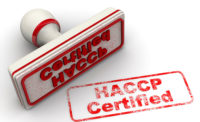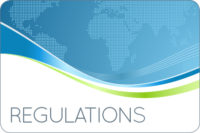 Periodically, the Food Safety and Inspection Service (FSIS) will announce its expectation that establishments reassess their HACCP plans in addition to the annual reassessment expected by the regulations. The reason for the announcement could be a change in agency policy, such as declaring six non-O157 STECs as adulterants, or in response to lessons learned from an outbreak recall or other regulatory action.
Periodically, the Food Safety and Inspection Service (FSIS) will announce its expectation that establishments reassess their HACCP plans in addition to the annual reassessment expected by the regulations. The reason for the announcement could be a change in agency policy, such as declaring six non-O157 STECs as adulterants, or in response to lessons learned from an outbreak recall or other regulatory action.
Following the announcement, the agency will verify that the establishments have indeed conducted a reassessment. Notwithstanding the agency expectation, there are establishments which fail to reassess their HACCP plans. Yet, in many of these cases, the establishment actually did reassess its plan but simply had failed to understand that they had done so, or, failed to document the reassessment. Conversely, there are establishments which modify the plan, even though such modification is not necessary.
Reassessment is the thought process by which an establishment reviews its total food-safety system to determine if the new hazard identified by FSIS is adequately addressed. A reassessment need not result in any changes to the plan. The problem is that many establishments perceive that "reassessment" equates to mandatory change, so they will implement a change, needed or not. Other establishments may not make a change - either because the system currently addresses the hazard raised by the agency or the hazard does not occur in the operation. However, they erroneously assert that they do not have to reassess because the requirement "does not apply to them." What these establishments really should say is that they have reassessed and determined no change is needed.
To avoid unneeded changes or regulatory entanglements, an establishment should set out, in writing, its thought process in these situations. In determining whether the hazard is adequately addressed, establishments should review the food-safety system with special attention to:
- Supplier Programs - many times a hazard can only be controlled at the supplier's location. Does the establishment have a supplier program in place and do the requirements control the newly identified hazard? If not, reach out to the supplier.
- Control Programs - if the establishment already addresses the same basic hazard, such as enteric pathogens, are the programs equally effective for the new specific hazard? Please note, this may require validation sampling of finished product for the new hazard to ensure the control programs are indeed being effectively implemented.
- Intended Use - FSIS may have identified a hazard in raw products; does the establishment only sell for processing into ready-to-eat products or is the class of customers, e.g., chain restaurants, adequate to mitigate against the hazard?
To complete this activity, the establishment needs to meet the other regulatory reassessment requirements in 9 CFR _ 417.4. First, the reassessment be conducted by a trained individual. Second, the reassessment be documented (a new requirement from last year).
When FSIS expects a reassessment, establishments need to comply. By making their thought processes more transparent, establishments can meet this requirement without unnecessary additions and without regulatory non-compliance.





Report Abusive Comment